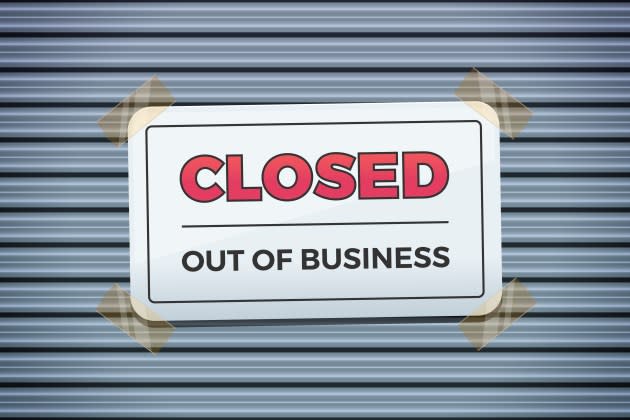Behind the Scenes of a ‘Going Out of Business’ Sale

Ray Armendariz is the chief executive officer of Hilco Wholesale Solutions. Armendariz joined Hilco in 1999 and has overseen the execution of numerous transactions covering a broad range of inventory categories and store formats within the continental U.S., Puerto Rico, Mexico, Canada, Australia and the U.K. Leveraging Hilco’s global disposition capabilities, infrastructure and expertise, Armendariz and the Hilco Wholesale Solutions team work to re-market merchandise assets while also avoiding channel conflict.
The end result is a timely, tailored disposition program that maximizes recovery and provides needed liquidity for clients. Here, Armendariz discusses retail bankruptcies, product disposition and “augment merchandise.”
More from WWD
UFC, Celio Unite to Take a Jab at Apparel for Gane-Spivac Fight in Paris
Shopping Habits of American Consumers: A Look at In-store Versus Online Purchasing
Fashion Industry Vets Open New Multibrand Boutique in Santa Monica
WWD: Why are we seeing so many retail bankruptcies these days?
Ray Armendariz: Consumers are enjoying the convenience, speed and the type of tailored online shopping experiences that became popular during and expanded after the pandemic. This and inflation pressure on consumer pocketbooks has really altered the retail landscape and diminished foot traffic in stores. As a result, we’ve seen record numbers of retail bankruptcies, restructurings and associated store closures in 2023.
WWD: Is selling merchandise at stores that are closing a much different process than just putting merchandise in standard store settings on sale?
R.A.: It absolutely is. When a retail operator goes out of business or strategically closes certain stores, sales events are conducted in those stores to sell off the remaining inventory. In these instances, of course, the goal is to sell as much merchandise as possible within a limited time frame, while maximizing return for the business or its creditors and stakeholders before ceasing operations.

WWD: Does that expertise exist within an operator’s own organization, or do they go outside to accomplish it?
R.A.: Store operators traditionally partner with third-party providers that specialize in monetizing these assets specifically in these situations.
WWD: And what services do companies like yours provide to the store as their partner?
R.A.: At Hilco, we assess the inventory on hand and help determine the pricing strategies that will be most appealing to consumers and effective during the limited store closing sale period. We also frequently augment the merchandise, assist with modifying store layouts, place displays and signage associated with the event, and market it to consumers to maximize foot traffic throughout the sale period.
WWD: Can you explain more about augmenting the merchandise?
R.A.: Sure. When a major retailer declares bankruptcy and embarks on efforts to close hundreds of its stores, our Hilco Wholesale Solutions team is often called upon to help augment the merchandise that an operator has in-store and at distribution centers. This augmentation helps ensure there will be enough merchandise and variety to appeal to consumers during the going out of business or store closing sale.
Whether an operator is shuttering all of its stores, is closing non-productive and end-of-lease locations, or exiting a geographic portion of a state, augmenting existing inventory is an important part of a liquidation strategy for retailers. Supplementing that inventory with relevant merchandise consistent with the items loyal shoppers have seen and purchased over their years of shopping in those stores (and that first-time shoppers coming specifically for the event might expect to find) is critical to ensuring successful GOB and closing events. This augment inventory can include highly desirable third-party brands, the store’s own private-label brands and, under certain circumstances, merchandise that has been meticulously debranded to avoid conflict.
WWD: Where does the supplemental merchandise used to augment come from?
R.A.: Interestingly, while retailers under these circumstances need this merchandise to ensure a successful outcome for closing sales, their suppliers frequently have a need to dispose of certain merchandise that can be an ideal fit for that purpose. Saddled with completed inventory that was never shipped when POs were canceled by their distressed customers, manufacturers are often in possession of the very merchandise that can be used to augment closing stores. But due to its specialized nature and certain competitive restrictions, we’ve seen that recovering value from this type of branded and private labeled merchandise can present quite a challenge for a supplier, manufacturer or distributor on their own.
WWD: How does your team know when and where to find the ideal type of merchandise for these uses?
R.A.: Because we’ve handled hundreds of GOBs and store closings for many of the largest and most highly recognizable retailers over the years, and because Hilco works regularly with many of these companies across a wide range of advisory and other capacities, our team enjoys close relationships with both retail operators and many of their vendors. So, by the time a major retailer is starting efforts to close dozens or hundreds of stores, our team has often already acquired the augment inventory needed directly from their own suppliers or our own sources. In fact, in many cases, a retailer or its creditors ask us to acquire that inventory on their behalf for that purpose. To give you some perspective on this, already during 2023, we’ve purchased over $100 million (at cost) of augment inventory.
Best of WWD


